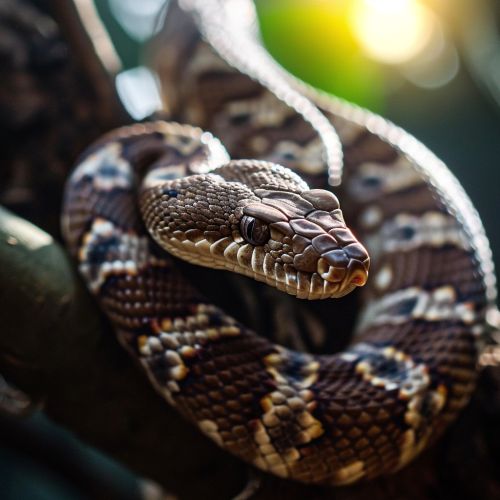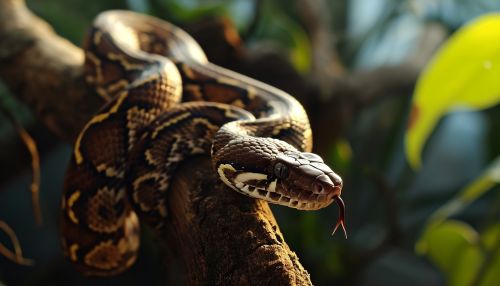Constrictor snake
Introduction
The Constrictor snake is a type of snake that kills its prey by constriction, a method that involves wrapping their bodies around the prey and squeezing until it suffocates. This group of snakes includes some of the largest snakes in the world, such as the Anaconda and the Python, as well as smaller species like the Boa constrictor and the Corn snake.


Anatomy and Physiology
Constrictor snakes have a unique anatomy that allows them to effectively capture and kill their prey. They have long, muscular bodies that can wrap around their prey and apply pressure. Their scales are designed to provide grip, preventing their prey from slipping away.
Unlike venomous snakes, constrictors do not have venom glands or fangs. Instead, they have rows of sharp, backward-facing teeth that are used to hold onto their prey while they wrap their bodies around it.
Constrictor snakes also have a highly flexible jaw that can dislocate to swallow prey much larger than their head. This is made possible by the quadrate bone, a unique feature in the anatomy of snakes that allows for extreme jaw flexibility.
Hunting and Feeding
Constrictor snakes are primarily ambush predators. They typically wait in a coiled position and strike when prey comes within reach. Once the prey is within their grasp, they quickly wrap their bodies around it and begin to constrict.
The constriction process is not, as commonly believed, about crushing or breaking the bones of the prey. Instead, it's about suffocation. The snake applies pressure that prevents the prey's lungs from expanding, causing death by asphyxiation.
Once the prey is dead, the snake will begin the process of swallowing it whole. The flexible jaw and expandable esophagus allow the snake to consume prey much larger than its head.
Reproduction
The reproductive process in constrictor snakes varies among species. Some species, like the boa constrictor, give live birth, while others, like pythons, lay eggs.
In species that give live birth, the female snake retains the eggs inside her body until they hatch. The young snakes are then born fully formed. In egg-laying species, the female will lay her eggs in a safe, warm location and, in some species, will coil around them for protection.
Habitat and Distribution
Constrictor snakes are found all over the world, in a variety of habitats. They are most commonly found in tropical regions, but can also be found in temperate areas. Some species, like the anaconda, prefer aquatic or semi-aquatic habitats, while others, like the python, are more terrestrial.
Conservation Status
The conservation status of constrictor snakes varies by species. Some, like the green anaconda, are listed as "Least Concern" by the IUCN, while others, like the Indian python, are considered "Vulnerable".
Habitat loss, hunting, and the pet trade all pose threats to constrictor snakes. Conservation efforts for these species often focus on habitat preservation and regulation of hunting and trade.
